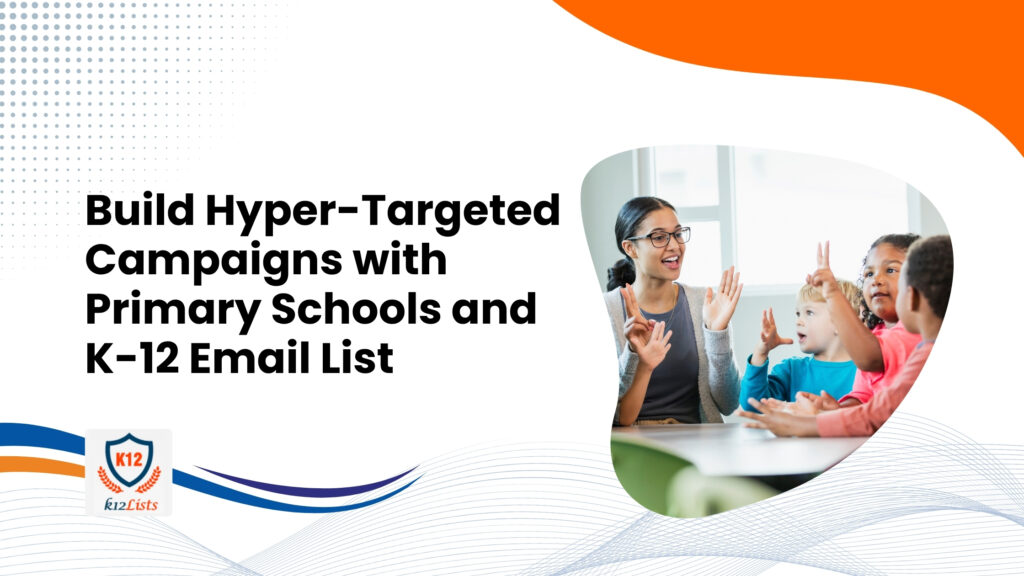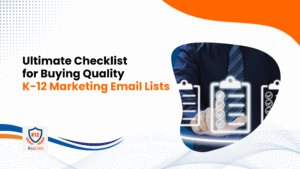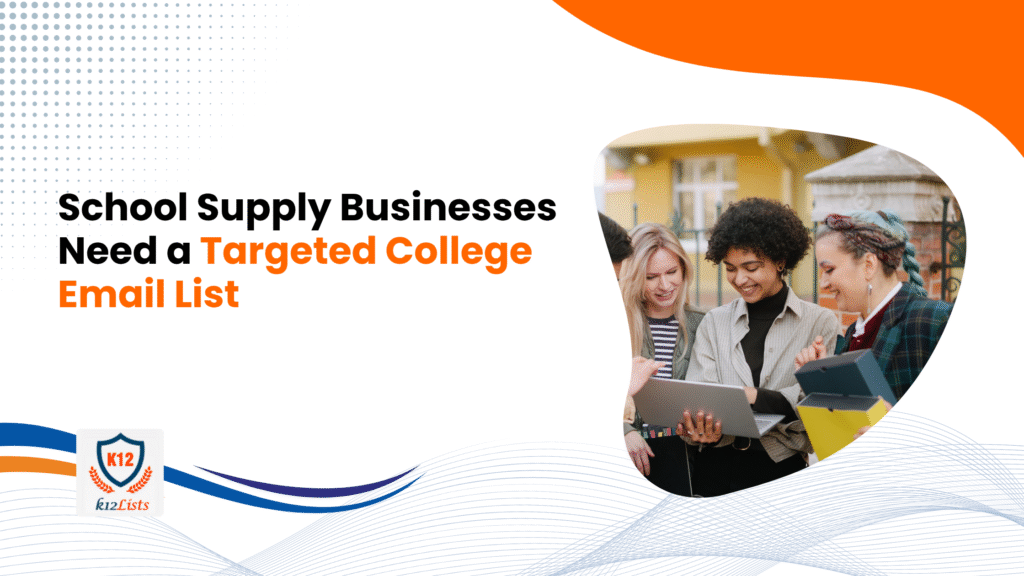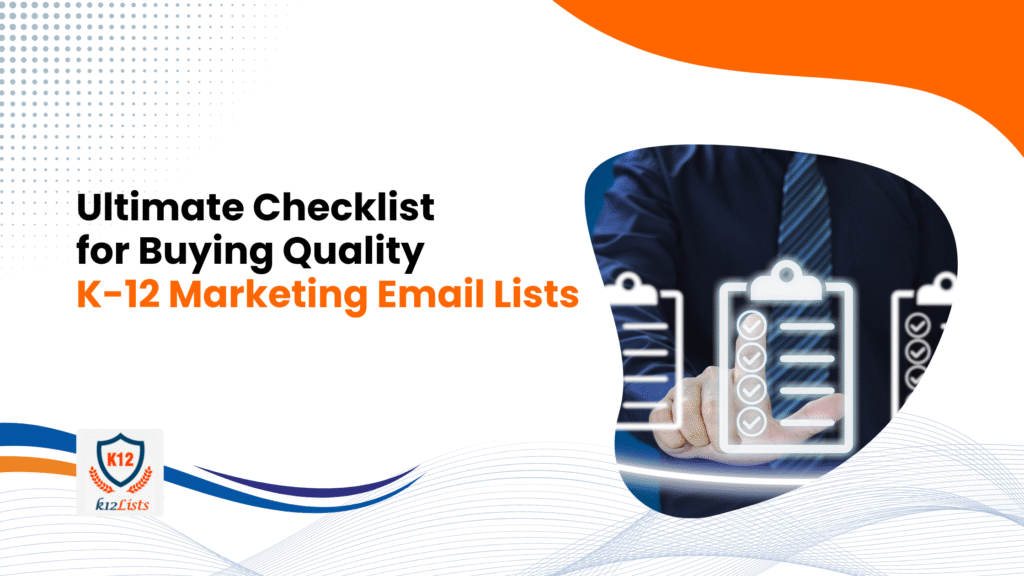In the competitive world of education marketing, just sending out a bunch of generic emails doesn’t cut it anymore. Whether you’re promoting an EdTech product, educational services, or professional development courses, you really need to reach exactly the right people those who make purchasing decisions in schools. That’s why Build hyper-targeted campaigns using verified Primary School and K-12 email lists is one of the smartest ways to boost engagement, get more conversions, and improve your return on investment.
Let’s dive into why hyper-targeting matters, how to understand your audience, and how to build campaigns that truly connect with educators and school leaders.
Why Hyper-Targeting is a Game-Changer in K-12 Marketing
Marketing to schools isn’t simple. The education sector is huge and diverse, with public, private, and charter schools. They differ by size, region, and decision-making setups. If you send the same general message to everyone, it often gets ignored in busy inboxes and your emails might not even reach their destination well.
Hyper-targeting means sending the right message to the right person at the right time. You do this by using accurate, verified email lists to zoom in on your ideal contacts. In K-12 education, this isn’t just a nice option, it’s essential.
Some of the big benefits of hyper-targeting include:
- Higher Engagement – When emails are relevant to the recipient’s role and school type, they open and click more.
- Better Deliverability – Verified lists mean fewer bounced emails and complaints.
- More ROI – Messages that meet specific needs convert better, so you don’t waste marketing dollars.
- Compliance Confidence – Targeted messaging helps you follow rules like FERPA and COPPA by avoiding irrelevant contacts.
Knowing Your Audience: Primary Schools vs. K-12 Decision Makers
When using K-12 email lists, there are two main groups to keep in mind:
Primary Schools Email List
These focus on schools for young kids (about ages 5-11). The key contacts you want here are principals, assistant principals, curriculum coordinators, and early childhood educators. Their priorities include early literacy programs, STEM for young learners, classroom management tools, and parent engagement.
Full K-12 Email List (Elementary to High School)
These cover a wider age range, from kindergarten through 12th grade (ages 5-18). This group includes superintendents, school administrators, IT directors, counselors, and teachers. Decision processes tend to be longer and involve more people. Common interests are technology integration, student assessments, staff training, and extracurricular activities.
Understanding these differences helps you craft focused messages that address what each group really cares about.
How to Build Hyper-Targeted Campaigns Step-by-Step

Step 1: Pick the Right List for Your Goals
Don’t try to market to everyone. Use Primary School lists for early education products, district-level lists for big launches, and combine teacher and admin lists for layered campaigns.
Step 2: Use Data Filters to Refine Your List
Verify your list fields like school type (public/private), grade levels, region, role/title, and school size. Filter to target areas or contacts that fit your product perfectly and respect their time by being relevant.
Step 3: Create Role-Specific Messages
Talk directly to what each group needs: principals are interested in school efficiency or literacy tools; IT directors prioritize tech security and scalability; teachers appreciate solutions that save time or support professional development.
Step 4: Use Personalization and Dynamic Content
Go beyond just a “Hi [First Name].” Use dynamic email sections tailored by role, reference their district or local policies, and add testimonials from similar schools. This makes each email feel like it was made just for them.
Step 5: Time Your Campaigns Smartly
Know when schools budget and make purchasing decisions—usually in late spring, summer, or around back-to-school time. Align your emails with these cycles for better response.
Step 6: Test everything and Learn
Track open rates, clicks, and conversions by segment. Experiment with subject lines, send times, and content. Use A/B testing to learn what works best and keep improving.
Why Building Your Own K-12 Email List Takes Time and What to Do Instead
While building a hyper-targeted campaign is essential, many marketers underestimate just how long and resource-intensive it is to build a clean, segmented email list from scratch-especially in the education sector.
Here’s what’s typically involved:
- Researching and identifying the right school districts and contacts
- Verifying decision-maker roles and email deliverability
- Segmenting by location, school type, and grade levels
- Ensuring compliance with data regulations like FERPA and COPPA
- Regularly cleaning and updating the list to avoid bounce issues
For most teams, this becomes a drain on time, budget, and internal bandwidth-before the actual campaign even begins.
That’s why thousands of EdTech providers, education consultants, and service providers rely on our verified Primary School and K-12 Schools email list.
Our data is:
- Permission-based and regularly updated for accuracy
- Segmented by role, grade, region, and school type
- Ready to integrate into your CRM or email platform
- Compliant with key data privacy regulations
- Backed by our support to help you launch faster and reach the right audience
By starting with our pre-verified lists, you skip the hard part and focus your efforts where it counts: crafting better messages, running smarter campaigns, and closing more deals.
Real-Life Success Story
A professional development company focused on early childhood literacy used this approach. They filtered their Primary School email list to reach principals and literacy coaches in select states. Their emails included research highlights and local success stories and were timed with budget planning months. The result? They saw a 77% increase in open rates and 69% more sign-ups for their workshops compared to previous generic campaigns.
Tips to Boost Your Campaigns Even More
- Mix email with ads or direct mail for bigger impact.
- Use AI and automation to scale personalization and trigger smart follow-ups.
- Always include clear calls-to-action like “Schedule a demo” or “Register now.”
- Show social proof like endorsements from trusted educators.
- Follow up in ways tailored to how engaged each contact is.
Using Verified Primary School and K-12 email lists for hyper-targeted campaigns is a powerful way to connect with education decision-makers. By focusing on relevance, personalization, timing, and compliance, you can cut through the noise, build trust, and get the results your marketing deserves.
Final thoughts
Hyper-targeted email campaigns built on verified Primary School and K-12 education email lists give marketers unmatched precision in reaching the right educational decision-makers. By using detailed segmentation, crafting role-specific messages, and timing your outreach based on data, you can cut through inbox clutter, build trust, and drive meaningful engagement and conversions.
Remember, your verified email lists are more than just data—they’re a vital connection to principals, administrators, teachers, and districts searching for solutions to real challenges. To get the best results, focus on relevance, compliance with regulations, and constantly refining your approach based on campaign insights. This way, every marketing dollar you spend works harder for your success.
Ready to take your education marketing to the next level?
Start building hyper-targeted campaigns that connect with school decision-makers. Contact us for expert help and verified Primary School and K-12 email lists.
Contact Us Now and let’s unlock your campaign’s full potential!
Frequently Asking Questions (FAQs):
1. What is hyper-targeting in K-12 email marketing?
Hyper-targeting means sending highly relevant, personalized emails to the right decision-makers in schools, using verified data to improve engagement and conversions.
2. Why should I use verified email lists for education marketing?
Verified lists reduce bounced emails, improve deliverability, enhance ROI, and help comply with regulations like FERPA and COPPA by reaching authorized contacts only.
3. How do I choose between Primary School and full K-12 email lists?
Use Primary School lists for early education products aimed at young children and their educators. Use full K-12 lists for district-wide solutions or products serving all grade levels.
4. What kind of roles should I target in education email campaigns?
Key roles include principals, assistant principals, curriculum coordinators (for primary), and superintendents, IT directors, counselors, and teachers (for broader K-12).
5. What are common mistakes to avoid in school email marketing?
Avoid generic mass emails, poor segmentation, not personalizing content, ignoring timing, weak subject lines, and neglecting list hygiene.
6. Can AI help improve my K-12 email campaigns?
Yes, AI can automate segmentation, personalize messaging at scale, optimize send times, and trigger behavior-based follow-up sequences.
7. What metrics should I track to measure campaign success?
Track open rates, click-through rates, conversions, bounce rates, and engagement by segment to continuously optimize your campaigns.







